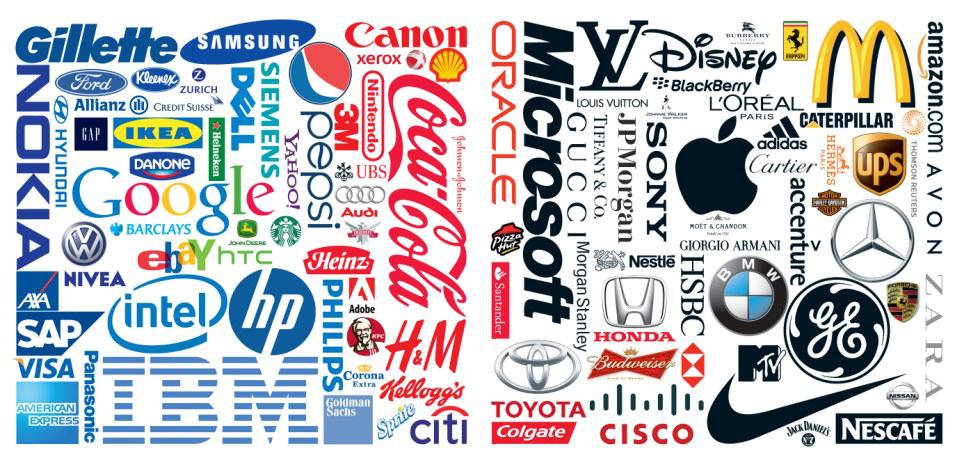Badania nad budowaniem marki: wprowadzanie nowej marki

Dlaczego dobra nazwa marki jest tak ważna?
Nadanie nazwy marce jest jednym z najważniejszych aspektów udanego rozwoju i wprowadzenia na rynek nowego produktu (lub usługi). Powinno ono zapewnić natychmiastową rozpoznawalność produktu i jego atrybutów. W pewnym momencie może mieć również znaczenie dla ekspansji bieżącego produktu na nowy rynek.
W jaki sposób wybierane są potencjalne nazwy marek?
Sesje ideacji wśród różnych członków zespołu marketingowego uzupełnione o mieszankę innych pracowników mogą często stanowić dobry początek. Ważne jest, aby ktoś ułatwiał proces, opisując, co nowy produkt ma robić i kim będą prawdopodobni klienci. Sugestie nie powinny być początkowo oceniane, ale jedynie rejestrowane i wymieniane. Głosowanie grupowe może pomóc zawęzić wybór do krótkiej listy w celu weryfikacji prawnej.
W tym momencie kandydaci mogą zostać przedstawieni próbce docelowej publiczności w celu poznania ich reakcji. Zewnętrzna firma badawcza rynku lub firma specjalizująca się w tworzeniu nazw marek może zostać wykorzystana do przeprowadzenia niezbędnych badań terenowych i przedstawienia ustaleń.
Rozważania
Istnieje możliwość, że nazwa marki będzie stanowić problem, gdy przetłumaczony na inny język. Lata temu amerykański samochód nazywał się Nova. W języku angielskim słowo to odnosi się do jasnej gwiazdy. Ale w krajach hiszpańskojęzycznych dosłownie oznacza „nie jedzie” – nie jest to dobry wybór dla samochodu! Wiele osób powtarza historię, że ta nazwa spowodowała spadek sprzedaży w niektórych krajach, ale w rzeczywistości tak nie było. Jednak ta opowieść jest często cytowana ze względu na punkt, który ilustruje.Słowa, kolory i grafika może być bardzo skuteczny w jednym regionie lub kulturze, ale mieć niezamierzone konsekwencje, gdy jest używany gdzie indziej. Tłumaczenia nazwy marki, a tym bardziej sloganu marketingowego, mogą stać się mylące, obraźliwe lub, co gorsza, wulgarne dla niektórych części ciała lub funkcji. Nawet kolory używane w logo lub materiałach marketingowych powinny zostać sprawdzone pod kątem potencjalnych negatywnych konotacji lub symboliki w innej części świata. Możliwe, że nazwa marki będzie stanowić problem, gdy przetłumaczony na inny język. Lata temu amerykański samochód nazywał się Nova. W języku angielskim słowo to odnosi się do jasnej gwiazdy. Ale w krajach hiszpańskojęzycznych dosłownie oznacza „nie jedzie” – nie jest to dobry wybór dla samochodu! Wiele osób powtarza historię, że ta nazwa spowodowała spadek sprzedaży w niektórych krajach, ale w rzeczywistości tak nie było. Jednak ta opowieść jest często cytowana ze względu na punkt, który ilustruje.Słowa, kolory i grafika mogą być bardzo skuteczne w jednym regionie lub kulturze, ale mieć niezamierzone konsekwencje, gdy są używane gdzie indziej. Tłumaczenia nazwy marki, a tym bardziej sloganu marketingowego, mogą stać się mylące, obraźliwe lub, co gorsza, wulgarne dla niektórych części ciała lub funkcji. Nawet kolory używane w logo lub materiałach marketingowych powinny zostać sprawdzone pod kątem potencjalnych negatywnych konotacji lub symboliki w innej części świata.
Jaka jest rola badań nad marką?
Badania rynku i/lub techniki jakościowe (np. grupy fokusowe) można stosować w celu znalezienia i przetestowania odpowiedzi na kluczowe pytania, takie jak:
Czy konsumenci mogą określić, czym jest lub co oferuje produkt lub usługa? np. E-Trade (firma brokerska online/elektroniczna); EZKleen (filtry powietrza) Czy nazwa sugeruje wartość lub korzyść? np. BestBuy (elektronika z rabatem); Duracell (długotrwała bateria); Visijax (odzież ochronna z odblaskami i światłami LED) Czy nazwa marki jest łatwa do wymówienia? Czy można jej używać globalnie? np. Toyota (samochody); Kleenex (wyroby papiernicze) Czy nazwa przetrwa próbę czasu? International Business Machines i ExxonMobil, podobnie jak wiele innych firm, rozwijały swoje biznesy z czasem. Skrót IBM pozwolił tej firmie dodać więcej usług w celu uzupełnienia oferty komputerowej. Po kilku przejęciach, ale przed fuzją z Mobil, Exxon zmienił nazwę z ESSO — skrót od „SO” lub (Jersey) „Southern Oil”. (Ważne jest, aby rozważyć, czy takie skrócenie nazwy lub użycie jej inicjałów nie spowoduje żadnych problemów.)
Czy ludzie to zapamiętają?
- Często cytowany artykuł [Schloss, Ira (1981), „Chickens and Pickles,” Journal of Advertising Research, 21 (6), 47–49] sugeruje, że kilka liter lub dźwięków (C, P i K) pojawiało się nieproporcjonalnie często w nazwach najlepszych marek, np. Coca-Cola; Pepsi.
Krótkie imię zazwyczaj zapamiętujemy lepiej niż długie.
Wyraziste słowo lub dźwięk pozwoli uniknąć pomyłki z innymi markami. Np. Goodyear i Goodrich (opony) nie różnią się wystarczająco, podczas gdy marki samochodów Volvo i Land Rover są wyjątkowe.
Nawet wymyślone słowo może być skuteczne, a przy tym uniknąć naruszenia praw autorskich lub pomyłki.

